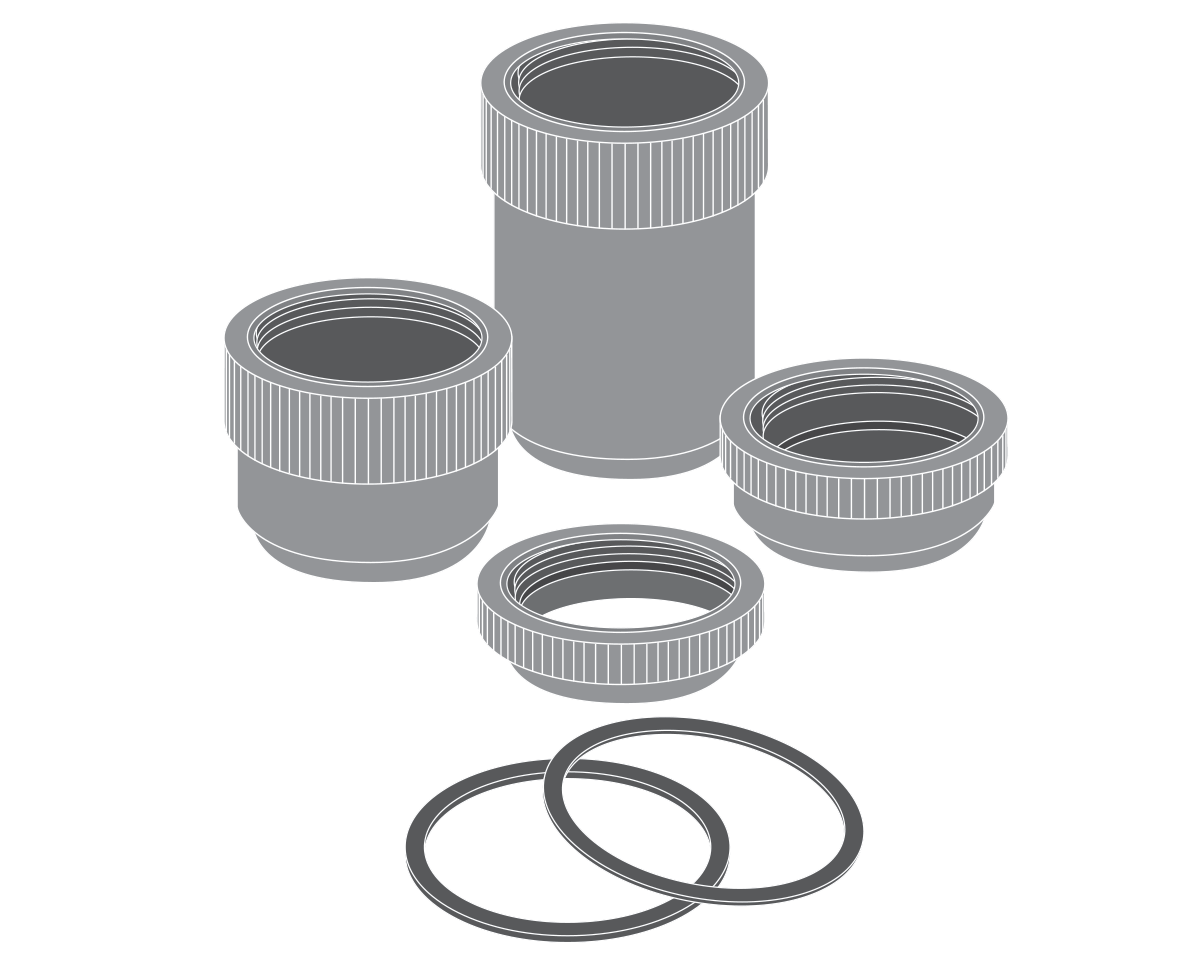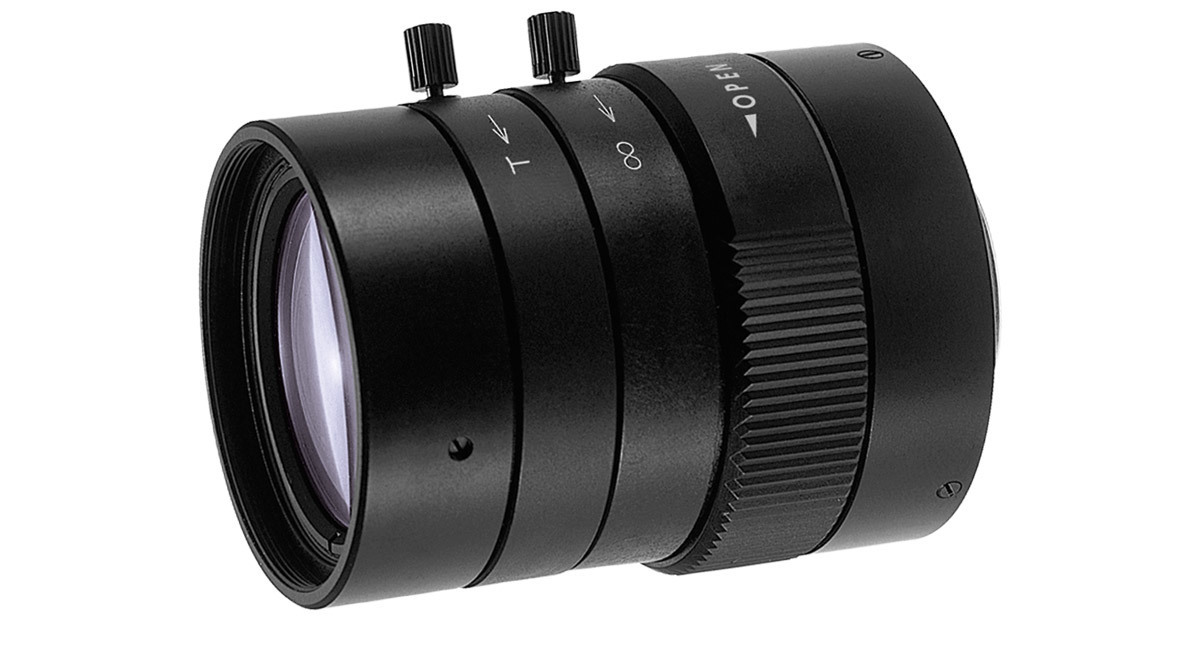Fixed focal length lenses
Fixed focal length lenses
Fixed focal length lenses are entocentric lenses, meaning that they collect rays diverging from the optical axis. Fixed focal length lenses are commonly used optics in machine vision, being affordable products that are well suited for standard applications.
Knowing the basic parameters - focal length and sensor size - it is easy to calculate the field of view and working distance; the focus can be adjusted from a minimum working distance to infinity; usually also the iris is controlled mechanically, allowing you to manually adjust the lens F/# and consequently the light intensity, field depth and resolution.
Fixed focal length lenses are inexpensive and versatile, but they are not suitable for all applications. They usually introduce significant perspective errors and geometric distortion that are incompatible with precision measurement applications. Also, the manually adjustable iris and focus introduce some mechanical play, which makes these lenses not ideal for applications requiring very consistent and repeatable settings.
Extension tubes
For most standard lenses the working distance (WD) is not a fixed parameter. The focusing distance can be changed by adjusting a specific knob. Nevertheless, there is always a minimum object distance (MOD) below which focusing becomes impossible. Adding an extension tube (see Fig. 46) between the lens and the camera increases the back focal length, making it possible to reduce the MOD.
This also increases the magnification of the lens or, in other words, reduces the FOV. While very common in the vision industry, this procedure should be avoided as much as possible, because it degrades the lens performance (resolution, distortion, aberrations, brightness, etc.). In these cases, it is recommended to use lenses natively designed to work at short working distances (macro lenses).

Varifocal lenses
Varifocal lenses are lenses with variable focal length (and thus angle of view), which can be adjusted by moving groups of optical elements with respect to each other inside the lens. The variable focal length allows for multiple combinations of working distances and magnifications, offering several different configurations with a single lens.
The convenience of variable focal length comes at the cost of complexity and some compromises on image quality, weight, dimensions, and aperture. Varifocal lenses can suffer from loss of image resolution at their maximum aperture, especially at the extremes of their focal length range. This effect is evident in the corners of the image when displayed in a large format or high resolution. The greater the range of focal length a lens offers, the more exaggerated these compromises must become.

Zoom lenses
Zoom lenses, also called parfocal lenses, are a special type of
varifocal optics in which the working distance is kept constant when
changing focal length (i.e. the focus is maintained throughout the
process).
Zoom lenses are often described by the ratio of their longest to shortest focal lengths or by the ration between their maximum to minimum magnification.
In this category, we can also find macro zoom (e.g. Opto Engineering® MCZR and MZMT) and telecentric zoom lenses (Opto Engineering® TCZRS).

